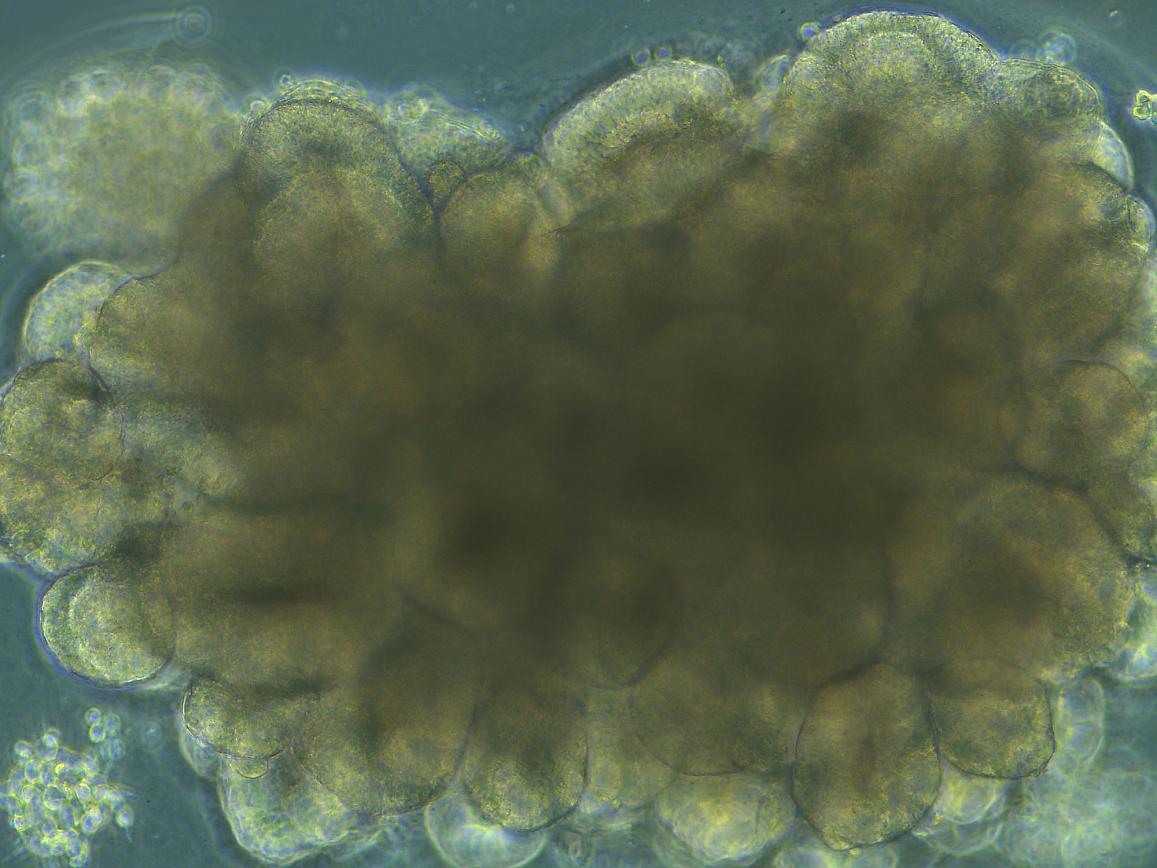IRP scientists develop “mini-brain” model of human prion disease
National Institutes of Health scientists have used human skin cells to create what they believe is the first cerebral organoid system, or “mini-brain,” for studying sporadic Creutzfeldt-Jakob disease (CJD). CJD is a fatal neurodegenerative brain disease of humans believed to be caused by infectious prion protein. It affects about 1 in 1 million people. The researchers, from NIH’s National Institute of Allergy and Infectious Diseases (NIAID), hope the human organoid model will enable them to evaluate potential therapeutics for CJD and provide greater detail about human prion disease subtypes than the rodent and nonhuman primate models currently in use.
Human cerebral organoids are small balls of human brain cells ranging in size from a poppy seed to a small pea. Their organization, structure, and electrical signaling are similar to brain tissue. Because these cerebral organoids can survive in a controlled environment for months, nervous system diseases can be studied over time. Cerebral organoids have been used as models to study Zika virus infection, Alzheimer’s disease, and Down syndrome.
In a new study published in Acta Neuropathologica Communications, scientists at NIAID’s Rocky Mountain Laboratories discovered how to infect five-month-old cerebral organoids with prions using samples from two patients who died of two different CJD subtypes, MV1 and MV2. Infection took about one month to confirm, and the scientists monitored the organoids for changes in health indicators, such as metabolism, for more than six months. By the end of the study, the scientists observed that seeding activity, an indication of infectious prion propagation, was present in all organoids exposed to the CJD samples. However, seeding was greater in organoids infected with the MV2 sample than the MV1 sample. They also reported that the MV1-infected organoids showed more damage than the MV2-infected organoids.

Brightfield microscope image of an organoid during development, showing highly structured regions forming.
This page was last updated on Friday, January 21, 2022